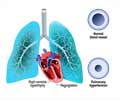Scientists have successfully used engineered heart muscle allografts to repair damaged hearts in primates and humans, offering new hope for heart failure patients.
- Stem cell therapy breakthrough: Engineered heart muscle allografts successfully repaired heart tissue in primates and humans
- Proven safety: The grafts remained functional for six months with no major side effects
- Hope for heart failure patients: This therapy could revolutionize heart failure treatment in the near future
Engineered heart muscle allografts for heart repair in primates and humans
Go to source).
Science Behind EHM (Engineered Heart Muscle) Allografts
A promising new approach involves the use of Engineered Heart Muscle (EHM) allografts derived from Induced Pluripotent Stem Cells (iPSCs) to repair damaged hearts. The study, led by Ahmad-Fawad Jebran, Tim Seidler, and Wolfram-Hubertus Zimmermann, among others, investigated the use of EHM allografts to remuscularize failing hearts. These allografts are created by combining iPSC-derived cardiomyocytes (heart muscle cells) and stromal cells (supportive cells) into a functional tissue patch. The goal is to enhance heart function by replacing damaged tissue with healthy, engineered muscle.Engineered heart muscle patches can integrate into damaged hearts and restore function! #hearthealth #medindia’
- Long-Term Retention: The EHM grafts remained functional for up to six months, showing no signs of rejection or tumor formation.
- Improved Heart Function: The grafts enhanced the contractility of the heart wall and improved overall heart function, as measured by ejection fraction (a key indicator of heart health).
- Safety: No significant side effects, such as arrhythmias or tumor growth, were observed, even at high doses of EHM.
Challenges and Future Directions of EHM Allografts
The EHM allografts are designed to integrate with the host heart tissue. Key features include:- Vascularization: The grafts develop a blood supply, ensuring their survival and functionality.
- Mechanical Integration: The patches mechanically entrain with the host heart, contributing to its pumping action without causing electrical disturbances like arrhythmias.
- Immune Suppression: Effective immunosuppression protocols were developed to prevent rejection of the allografts.
- Immune Response: Despite immunosuppression, some immune cell infiltration was observed, which may require further optimization.
- Dose Optimization: The study identified a maximal feasible dose, but further research is needed to determine the optimal dose for different patients.
- Long-Term Outcomes: More extensive clinical trials are necessary to assess the long-term safety and efficacy of EHM allografts.
Reference:
- Engineered heart muscle allografts for heart repair in primates and humans - (https://www.nature.com/articles/s41586-024-08463-0)
Source-Medindia
















